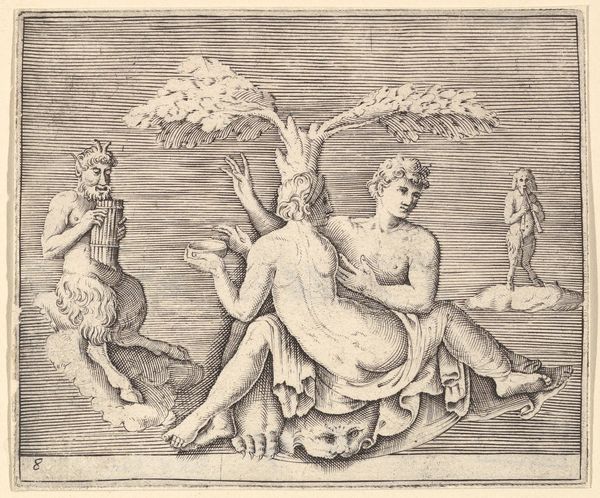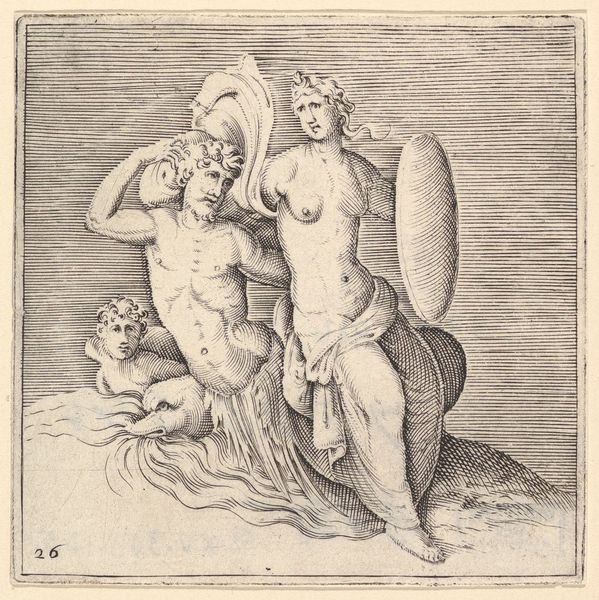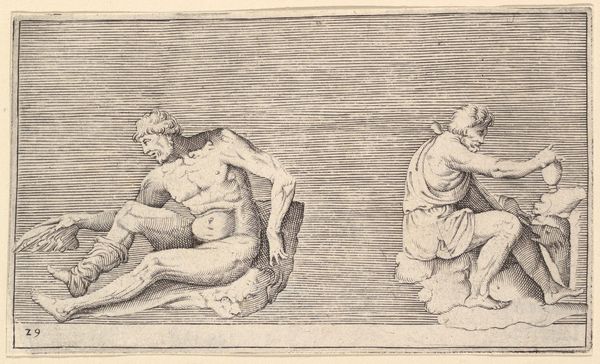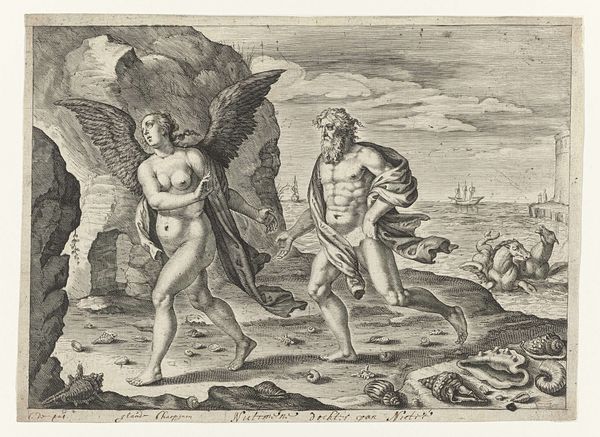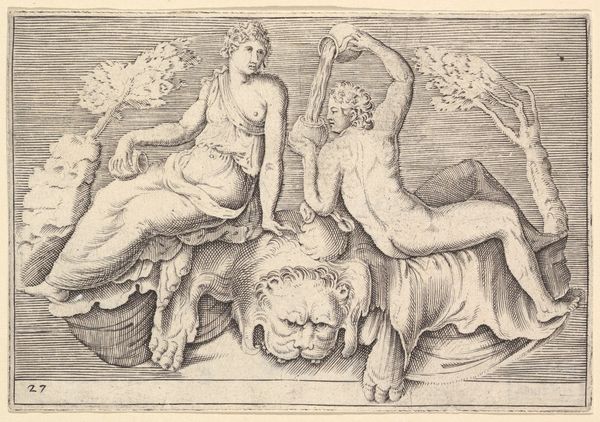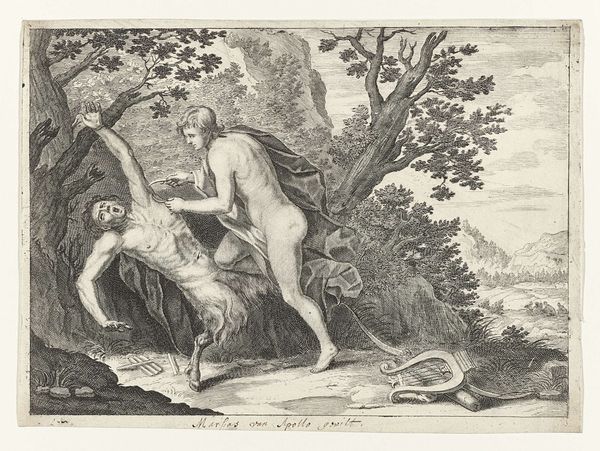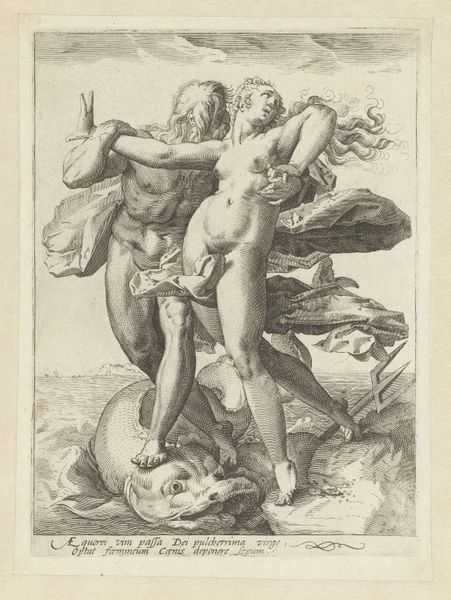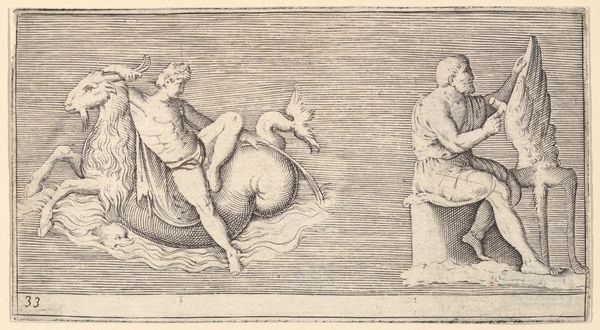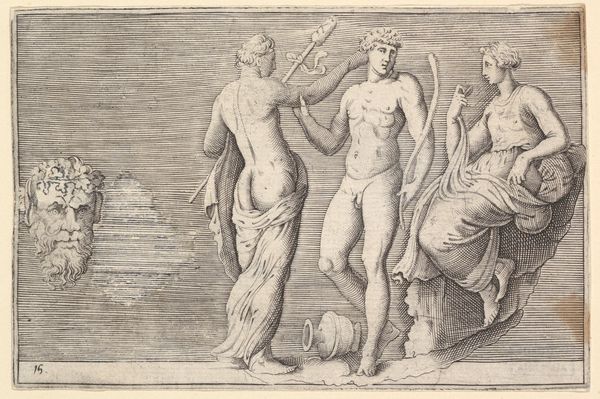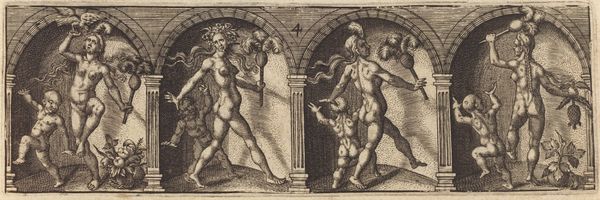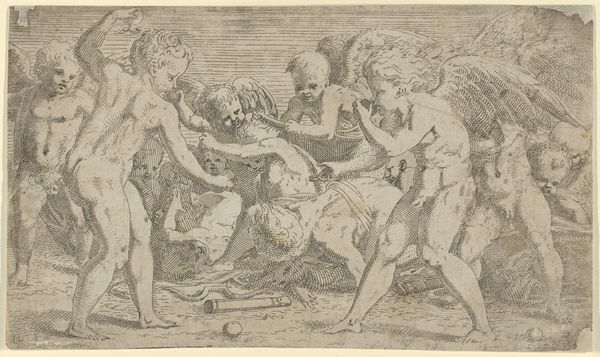
Head of Woman in Profile; Apollo and Daphne, from "Ex Antiquis Cameorum et Gemmae Delineata/ Liber Secundus/et ab Enea Vico Parmen Incis" 1599 - 1622
0:00
0:00
drawing, print
#
pencil drawn
#
drawing
#
toned paper
#
light pencil work
#
head
# print
#
pen sketch
#
pencil sketch
#
old engraving style
#
personal sketchbook
#
pen-ink sketch
#
men
#
pen work
#
pencil art
#
profile
Dimensions: plate: 3 7/16 x 4 7/8 in. (8.8 x 12.4 cm)
Copyright: Public Domain
Editor: This print, "Head of Woman in Profile; Apollo and Daphne," created between 1599 and 1622, strikes me with its stark contrast between the detailed head on the left and the more active scene on the right. It feels like two separate pieces brought together. How do you interpret this work, and its composition? Curator: Formally, the division you observe creates a visual tension, wouldn't you agree? The profile head, rendered with a meticulous cross-hatching technique, offers a stillness that is offset by the dynamic, almost frantic, lines depicting the Apollo and Daphne narrative. Consider how the artist utilizes line weight: thin, delicate lines define the face, whereas the figures on the right possess heavier, more assertive contours. Editor: That's a fascinating observation! It's almost like the artist is using two different visual languages within the same piece. Does the artist's choice create a meaning itself? Curator: Indeed. Observe how the stark horizontal lines in the background unify, yet paradoxically further isolate the two scenes. Semiotically, horizontality often suggests stasis or neutrality. Do you think its purpose might be to emphasize the disparity between representation and narrative, or stillness versus action? The "grammar" of the work suggests the contrast. Editor: I never considered it from a semiotic perspective before. I guess I was so focused on the subjects themselves! Seeing it in terms of its visual structure really changes how I understand it. Thank you. Curator: A keen focus on the structural is just the beginning, you'll begin to see how the structural dictates meaning, not just aesthetic value, more and more as we go on.
Comments
No comments
Be the first to comment and join the conversation on the ultimate creative platform.
